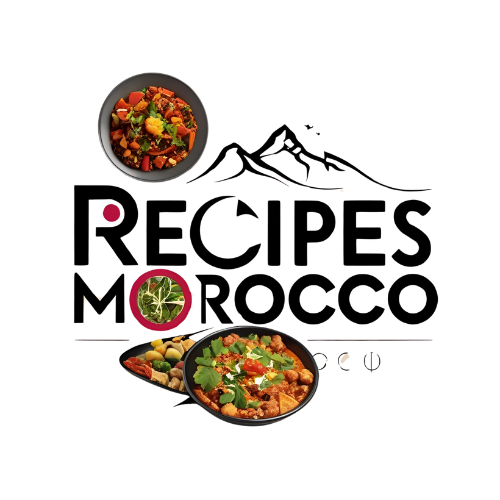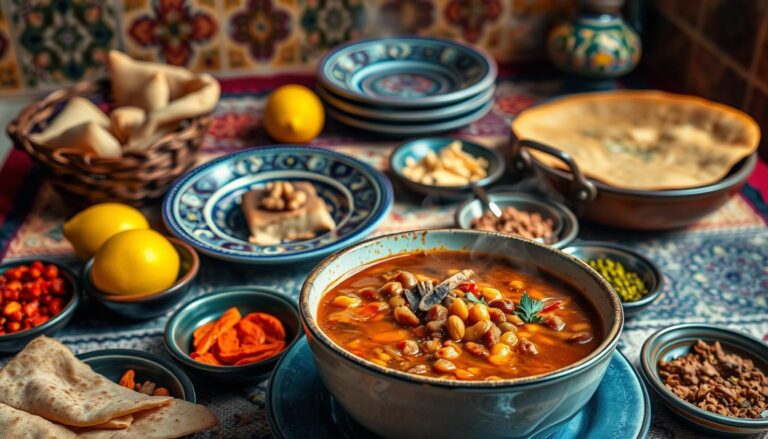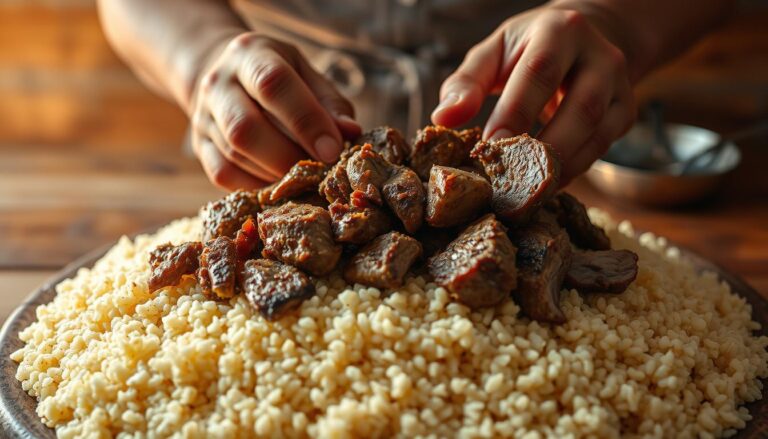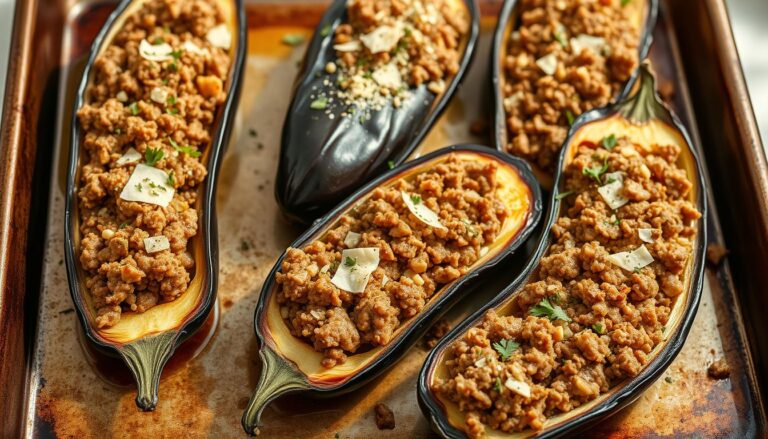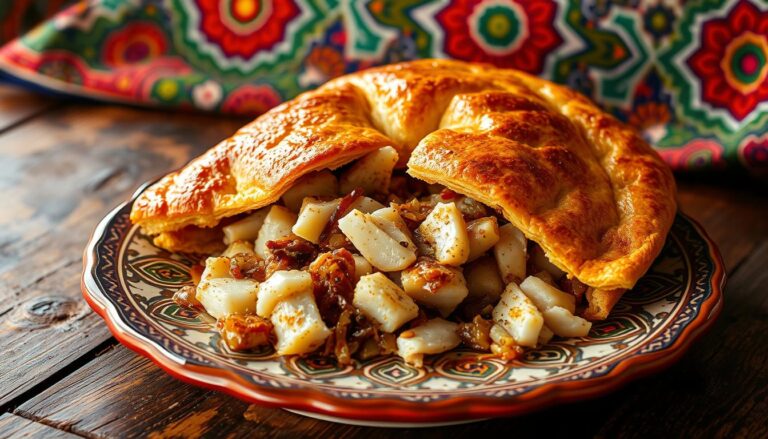A Mainstay of North African Cuisine: Savoring Moroccan Couscous
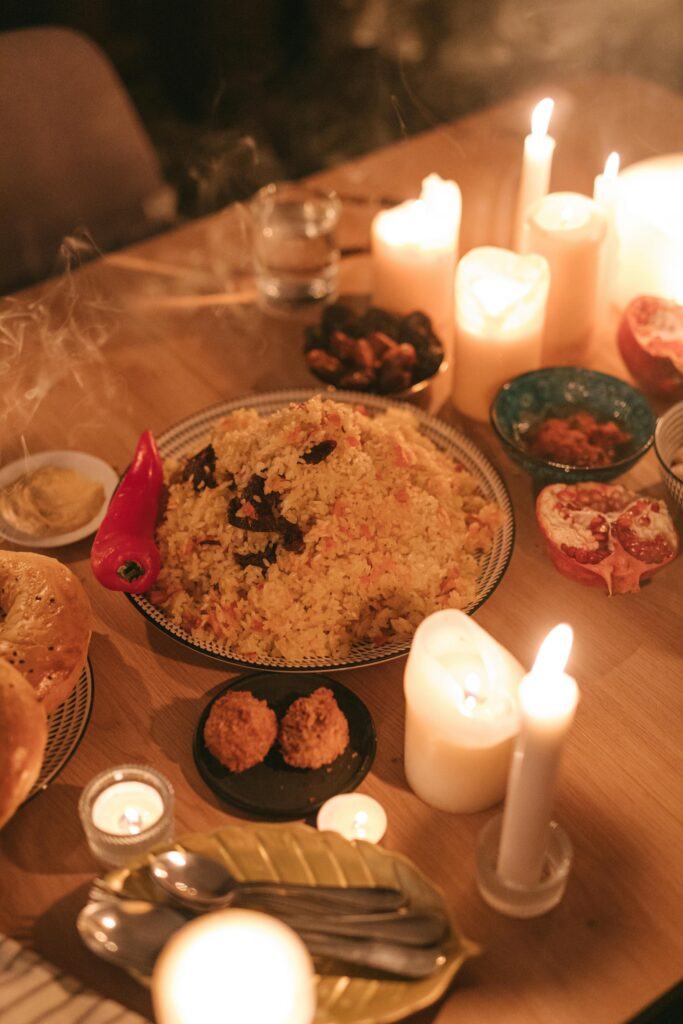
Moroccan kitchens and hearts have a particular place for couscous, which is frequently praised as the meal that best embodies North African cuisine. Made from steamed semolina wheat, this adaptable staple is more than just a meal; it is a representation of hospitality, tradition, and community. Since its inception by the Berber people of North Africa, couscous has changed over the years, including elements from Arab and Mediterranean cultures. It is a popular dish all around the world because of its light, fluffy texture and capacity to go well with a wide range of ingredients. Couscous, which symbolizes the spirit of sharing and community, is frequently offered during festive occasions, family get-togethers, and regular meals in Morocco. In order to explain why Moroccan couscous is a mainstay of North African cuisine, this article will examine 10 different facets of the dish, including its history, preparation techniques, cultural significance, and a number of delectable dishes.
Couscous’s History
The Berber tribes of North Africa are the originators of couscous, which has a long and colorful history that goes back more than a millennium. The fact that couscous was mentioned in writing for the first time in the ninth century emphasizes how important it is as a regional staple. In the past, couscous was prepared by hand by moistening and rolling semolina wheat into tiny granules, which were then steam-cooked in a special pot known as a “couscoussier.” Because families would get together to cook it collectively, this generation-old preparation technique highlights the communal nature of couscous. Couscous eventually made its way outside of Morocco’s boundaries, impacting the cuisine of nearby nations like Algeria and Tunisia. It is now revered all over the world and acknowledged as a cultural artifact that captures the history and customs of the peoples of North Africa, in addition to being a food item.
The Couscous Ingredients
Semolina, or coarsely crushed durum wheat, is the main component in couscous. since of its strong gluten and high protein content, this wheat variety is perfect for creating couscous since it cooks up fluffy. Traditionally, couscous is served with a range of dishes, including meats, vegetables, and spices. Carrots, zucchini, and chickpeas are common veggies that are nutritious and flavorful. Spices are essential for improving flavor; saffron, cumin, and coriander are commonly used to make a fragrant basis. To further improve the flavor of couscous, Moroccans frequently sprinkle it with a hearty broth, usually cooked from lamb or chicken. These components work together to create Moroccan couscous, a dish that reflects the creativity of North African cooking and is both filling and healthy.
The Process of Preparation
In order to acquire the ideal texture and flavor, couscous preparation is an art that requires multiple procedures. The traditional method of making couscous involves rolling semolina wheat into tiny granules after it has been sprayed with water. This procedure, known as “moulinage,” calls for expertise to guarantee that the grains are uniformly proportioned. A couscoussier, a two-tiered pot that ensures consistent cooking, is used to steam the couscous once it has formed. The couscous absorbs the steam and becomes light and fluffy over the 30 to 40 minutes that the steaming procedure usually takes. To keep the grains apart and avoid clumping, the couscous must be fluffed with a fork after steaming. Pre-packaged couscous is a popular choice in contemporary kitchens since it saves time in preparation, but the traditional approach is still valued for its genuine flavor and texture. Anyone wishing to explore Moroccan cuisine must learn how to make couscous since it serves as the basis for so many delectable meals.
Moroccan Culture’s Use of Couscous
In Moroccan culture, couscous is much more than just a food; it is a representation of friendliness and camaraderie. Couscous is typically made for special events like weddings, religious holidays, and family get-togethers, where it is frequently used as a focal point. Sharing a big platter of couscous with loved ones strengthens social and cultural relationships by promoting a sense of community. Couscous is typically served on Fridays in Moroccan homes as a way to celebrate the end of the week with a group meal. Proverbs and sayings further illustrate the importance of couscous and show how ingrained it is in daily life. This cultural significance goes beyond Morocco because couscous has emerged as a North African staple that is enjoyed in many different ways throughout the continent. The communal nature of couscous emphasizes the importance of connection and charity in Moroccan society.
Customary Moroccan Couscous Recipes
The variety of couscous dishes found in Moroccan cooking demonstrates the adaptability of this basic grain. Among the most well-known versions is Couscous Royal, which consists of a bed of fluffy couscous topped with a variety of meats, including as lamb, chicken, and merguez sausages. Couscous with Seven Vegetables is another well-liked recipe that highlights fresh food and is bright and colorful. Simmered in a tasty broth, the dish usually consists of chickpeas, pumpkin, zucchini, and carrots. A delicious dessert choice for anyone with a sweet tooth is Sweet Couscous, which is cooked with cinnamon, sugar, and raisins. These classic recipes showcase the versatility of couscous while also showcasing the local ingredients and culinary tastes that characterize Moroccan cooking. Every recipe narrates a tale, beckoning diners to savor North Africa’s diverse cuisine and rich cultural legacy.
The Health Advantages of Couscous
Couscous is a beneficial complement to any diet since, in addition to its great flavor, it has several health advantages. Couscous is a complete grain that contains complex carbs, which provide you long-lasting energy and help control blood sugar levels. It is also a great option for vegetarians and those looking for plant-based protein sources because it is high in protein, especially when paired with legumes like chickpeas. Couscous is also low in fat and includes important minerals and vitamins, such as iron, magnesium, and B vitamins. Couscous’ nutritional profile is further improved by the addition of vegetables and spices, which provide fiber, antioxidants, and anti-inflammatory qualities. A balanced and nutrient-dense diet is encouraged by the health advantages and adaptability of couscous, which makes a healthy foundation for a range of dishes.
International Couscous Varieties
Although couscous has a strong cultural connection to Morocco, its appeal has expanded throughout the world, giving rise to regional varieties that highlight regional ingredients and culinary customs. Similar to Moroccan cuisine, Algerian couscous is frequently served with lamb and vegetables, though it may also contain regionally specific spices and flavors. Harissa, a hot chili paste, is commonly used to flavor couscous in Tunisia, giving the dish a fiery bite. Furthermore, couscous has gained popularity in many Mediterranean nations and is now a staple in their own cuisines. For instance, couscous is frequently offered with a range of meats and vegetables in North African restaurants in France. These modifications demonstrate couscous’ adaptability and cross-cultural appeal, which has made it a popular meal all over the world.
How to Prepare Couscous in the Present
The popularity of instant couscous products, which can be made in a matter of minutes, is a result of people’s need for ease in their cooking in today’s hectic environment. Even if this contemporary procedure is quick and simple, it’s important to appreciate the benefits of more conventional preparation techniques. The richness of taste and texture that comes from the traditional steaming method may not be present in instant couscous. Nonetheless, there are ways to honor the true flavors of couscous while incorporating contemporary methods. For instance, adding high-quality spices or homemade broth can greatly improve the flavor of instant couscous. Additionally, chefs can produce distinctive and fulfilling meals without compromising authenticity by experimenting with different toppings and ingredients. Couscous can become more widely available and produce great outcomes when convenience and tradition are balanced.
Combining Other Dishes with Couscous
A versatile dish, couscous goes well with a variety of proteins and sauces, making it the ideal side dish for a number of different dinners. In order to allow the flavors to blend, traditional Moroccan stews, like tagines, are frequently served over a bed of couscous. Additionally, grilled meats like lamb or chicken skewers make great selections because the charred flavors go well with the mild couscous. Couscous can be served with spicy chickpeas or roasted vegetables for vegetarian options, making for a vibrant and nourishing dish. Couscous can also be used as a foundation for salads, where it can be combined with almonds, citrus, and fresh herbs to create a light and energizing meal. Because of its versatility, couscous can be used as a side dish or as a main course, encouraging culinary experimentation and innovation.
Recipes to Try
Discovering different recipes that highlight Moroccan couscous’ adaptability is crucial to enjoying it to the fullest. Couscous with Seven Vegetables, a traditional dish that includes seasonal vegetables like radishes, zucchini, and carrots cooked in a flavorful broth, is a must-try. For a more substantial choice, Couscous Royal offers a feast fit for special occasions by combining lamb, chicken, and spicy sausages. Tossed with cucumbers, tomatoes, and a zesty lemon vinaigrette, couscous salad makes a cool summer meal. A delicious dish for anyone with a sweet craving is Sweet Couscous, which is cooked with sugar, cinnamon, and dried fruits. Each of these dishes encourages you to savor Moroccan flavors and the sense of community that couscous represents.
In conclusion
A culinary gem that cuts beyond boundaries and generations, Moroccan couscous embodies the rich history and culture of North Africa. From its historical roots to its modern modifications, couscous is a tribute to the ingenuity and inventiveness of its makers. Because of its adaptability, it can be eaten as a light salad, a sweet dessert, or a substantial main course. In addition to learning about the tastes and components that make up this well-liked staple, you will also learn about the strong ties to hospitality and community that Moroccan couscous symbolizes. Using couscous in your cuisine allows you to enjoy the joy of gathering people around the table and to partake in the warmth of Moroccan culture.
